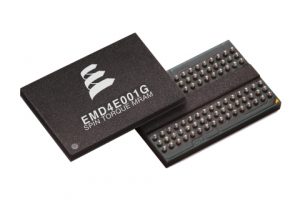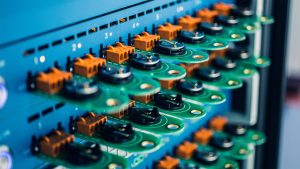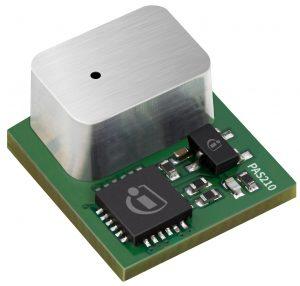
EDACafe Editorial Roberto Frazzoli
Roberto Frazzoli is a contributing editor to EDACafe. His interests as a technology journalist focus on the semiconductor ecosystem in all its aspects. Roberto started covering electronics in 1987. His weekly contribution to EDACafe started in early 2019. Major stories this week: supercomputers; memories; car batteries; CO2 sensorsJune 20th, 2019 by Roberto Frazzoli
The International Supercomputing Conference (June 16-20, Frankfurt, Germany) brought interesting news concerning this strategically important industry, while the 2019 Symposia on VLSI Technology and Circuits (Kyoto, Japan, June 9-14) is one of the sources of several announcements on memory technologies this week. Plus, R&D achievements in car battery technologies and a preview from the upcoming sensor events (Sensor+Test in Nuremberg and Sensors Expo in San Jose, CA, both from 25 to 27 June). World supercomputer ranking, Nvidia role, and a new challenger The new edition of the TOP500 supercomputer list is a source of extremely interesting information. For the first time, all 500 systems listed deliver a petaflop or more on the High Performance Linpack (HPL) benchmark. Two IBM-built supercomputers, Summit and Sierra – installed at the Department of Energy’s Oak Ridge National Laboratory (ORNL) in Tennessee and Lawrence Livermore National Laboratory in California, respectively – retain the first two positions on the list, with the Summit system delivering a record 148.6 petaflops. China now claims 291 out of 500 systems, followed by the United States with 116. Japan is in third place with 29 systems, followed by France with 19, the United Kingdom with 18, and Germany with 14. The US, however, still maintain their lead in overall HPL capacity, with 38.4 percent of the aggregate list performance. Chinese supercomputer vendors now have the largest share in the list, with Lenovo claiming 173 systems, followed by Inspur with 71, and Sugon with 63. From a processor perspective, Intel continues to dominate the TOP500 list, with the company’s chips appearing in 95.6 percent of all systems. IBM Power CPUs are in seven systems, followed by AMD processors, which are present in three systems. A single supercomputer on the list, Astra, is powered by Arm processors. A total of 133 systems on the TOP500 list employ accelerator or coprocessor technology, down slightly from 138 six months ago. Of these, 125 systems use NVIDIA GPUs. The current supercomputer processor and coprocessor scenario, however, could change. Arm market share could grow, as Nvidia has announced its support for Arm CPUs. Nvidia is making available to the Arm ecosystem its full stack of AI and HPC software by year’s end. The stack includes all CUDA-X AI and HPC libraries, GPU-accelerated AI frameworks and software development tools such as PGI compilers with OpenACC support and profilers. On the other hand, Nvidia market share is now being challenged – at least for neural network applications – by Habana Labs, that has just announced its Gaudi AI Training Processor. According to the company, training systems based on Gaudi processors will deliver an increase in throughput of up to four times over systems built with equivalent number GPUs. In addition, Gaudi brings on-chip integration of RDMA over Converged Ethernet (RoCE v2) functionality, to enable the scaling of AI systems to any size, using standard Ethernet (instead of proprietary system interfaces). Gaudi AI training processor supports the OCP Accelerator Module (OAM) specification and Facebook-originated open-source Glow software. Also, Gaudi is reportedly using only 140W when running the ResNet-50 model benchmark, half the Nvidia V100’s power. According to microprocessor expert Linley Gwennap, Habana’s Gaudi “provides freedom from high prices as well as freedom from proprietary software and proprietary interfaces. This freedom will appeal to hyperscale customers that currently buy many expensive Nvidia GPUs for neural-network training”. Memory innovations in embedded flash, ReRAM, STT-MRAM Renesas has announced the development of a new low-power technology for use in embedded flash memory (on an MCU) based on a 65 nm SOTB (Silicon On Thin Buried Oxide) process. Available with 1.5 MB capacity, it is the world’s first embedded 2T-MONOS (2Transistors-Metal Oxide Nitride Oxide Silicon) flash memory based on 65nm SOTB technology. With the addition of a new circuit technology that reduces the power consumption of the peripheral circuits on flash memory, Renesas achieves a read energy of just 0.22 picojoules per bit at an operating frequency of 64 MHz. The company has also announced the development of a new technology for embedded flash memory on an MCU using a 28nm process, that achieves a capacity of 24 MB, a random access read speed of 240 MHz and low noise write operations when performing OTA wireless software updates in automotive applications. Weebit Nano and the French research institute Leti have filed two new patents for Weebit’s Silicon Oxide (SiOx) ReRAM technology, concerning methods for optimizing the performance of ReRAM memory cells by adjusting the manufacturability based on electrical measurements. Optimization reduces manufacturing costs and allows for more flexible manufacturing capability. Everspin Technologies has completed development activity and entered the pilot production phase of its 28 nm 1-Gigabit Spin Torque Transfer Magnetoresistive Random Access Memory (STT-MRAM) product. The company has been in volume production of its 256 Mb STT-MRAM product for more than a year. Car batteries reach 400 Wh/liter energy density At the European Electric Vehicle Batteries Summit (Berlin, Germany, June 18-19), Belgian research institute Imec has announced a solid-state Li-metal battery cell with an energy density of 400 Wh/liter at a charging speed of 0.5C (two hours). With its roadmap for solid-state batteries, Imec aims to surpass wet Li-ion battery performance and reach 1000 Wh/liter at 2-3C charging speed by 2024. As opposed to regular Li-ion batteries, which use a wet electrolyte, the technology developed by Imec is based on a solid nanocomposite electrolyte. This material, however, is applied as a liquid and only afterwards converted into a solid, so that it fills all cavities between electrodes. Imec has also announced the realization of a pilot line for fabrication of solid-state pouch cells at the EnergyVille Campus in Genk (Belgium), in collaboration with the University of Hasselt (Belgium). According to Imec, battery manufacturers that will adopt the new technology would not need expensive investments to switch from wet to solid-state cells. Compact CO2 sensor based on photoacoustic spectroscopy At the upcoming sensor events, Infineon will showcase its new CO2 sensor based on photoacoustic spectroscopy. Called XENSIV PAS210, the device integrates the photoacoustic transducer (using a MEMS microphone as a detector), the infrared source, the optical filter, a microcontroller for signal processing and a MOSFET to drive the infrared source. The ppm reading is available either via the serial I²C, UART or PWM interface. XENSIV PAS210 CO2 measurement capabilities cover a range from 0 ppm to 10,000 ppm with an accuracy of ± 30 ppm or ±3 percent. The new sensor is significantly smaller than previous CO2 measurements solutions; its potential applications include indoor air quality monitoring in smart home/building automation equipment. |
|
|
|||||
|
|
|||||
|
|||||










